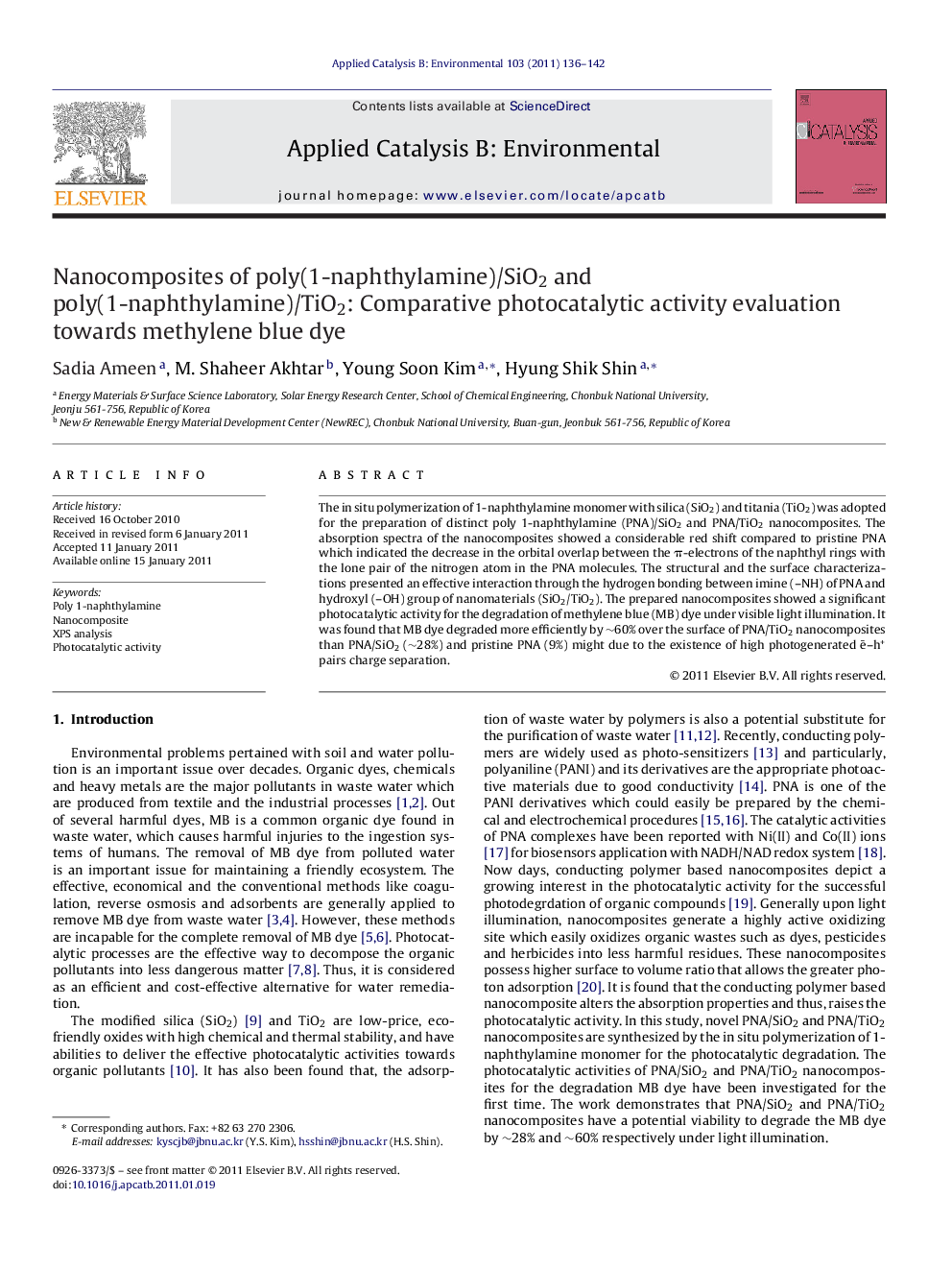| Article ID | Journal | Published Year | Pages | File Type |
|---|---|---|---|---|
| 47002 | Applied Catalysis B: Environmental | 2011 | 7 Pages |
The in situ polymerization of 1-naphthylamine monomer with silica (SiO2) and titania (TiO2) was adopted for the preparation of distinct poly 1-naphthylamine (PNA)/SiO2 and PNA/TiO2 nanocomposites. The absorption spectra of the nanocomposites showed a considerable red shift compared to pristine PNA which indicated the decrease in the orbital overlap between the π-electrons of the naphthyl rings with the lone pair of the nitrogen atom in the PNA molecules. The structural and the surface characterizations presented an effective interaction through the hydrogen bonding between imine (–NH) of PNA and hydroxyl (–OH) group of nanomaterials (SiO2/TiO2). The prepared nanocomposites showed a significant photocatalytic activity for the degradation of methylene blue (MB) dye under visible light illumination. It was found that MB dye degraded more efficiently by ∼60% over the surface of PNA/TiO2 nanocomposites than PNA/SiO2 (∼28%) and pristine PNA (9%) might due to the existence of high photogenerated ē–h+ pairs charge separation.
Graphical abstractFigure optionsDownload full-size imageDownload as PowerPoint slideResearch highlights► The effective PNA/SiO2 and PNA/TiO2 nanocomposites exhibit a potential viability to degrade the MB dye by ∼28% and ∼60% respectively under visible light illumination. ► Remarkable photocatalytic activity of PNA/TiO2 nanocomposite attributes to the efficient high charge separation of ē–h+ pairs in the excited states of coupled PNA and TiO2 nanomaterials. ► The SiO2 and TiO2 are low-price, eco-friendly oxides with high chemical and thermal stability, and have abilities to deliver the effective photocatalytic activities towards organic pollutants.
